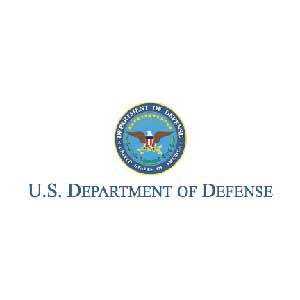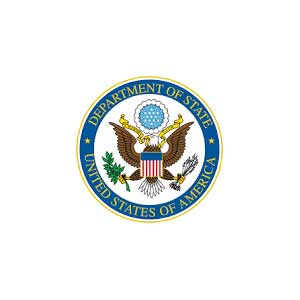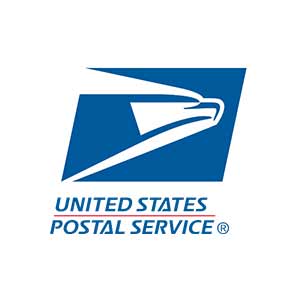Decoding USPS Policies: From Mail Collection to Address Usage

Navigating the vast sea of USPS policies might feel akin to decoding an ancient script for many of us. Whether it’s the daily dance to the mailbox, the anticipation of an important package, or the meticulous craft of sending out invitations, understanding the ins and outs of these policies can drastically alter our mailing experience. Yet, for all its importance, the maze of guidelines governing mail collection, delivery practices, and address usage remains a mystery to the average mail user.
Why does it matter if your mailbox doesn’t meet regulations or if you format your address in an unconventional way? Could these seemingly minor details be the difference between swift delivery and a package lost in postal limbo? This article aims to shed light on these questions, providing clarity on USPS policies that impact our everyday lives. From the proper way to list your address to the inner workings of mail collection, we’re here to demystify the processes that keep our world in motion.
Overview of USPS Policies
The United States Postal Service (USPS) operates on a framework of policies designed to ensure the efficient, secure, and equitable delivery of mail and packages across the country. Understanding these policies is crucial for anyone who sends or receives mail, from the individual homeowner to the largest corporation. Here, we’ll explore the foundational USPS policies that affect our daily interactions with our mailboxes and mail carriers.
The Basics Everyone Should Know
At its core, USPS establishes policies that govern a broad range of operations, including mail collection, delivery schedules, and the specifics of what people can and cannot mail. Key points include:
- Mail Collection Times: USPS typically collects mail from blue collection boxes and post office mail drop slots according to the schedule posted on the box or slot, though collection times vary by location.
- Delivery Standards: The USPS strives to deliver mail and packages within specific timeframes, based on the service level chosen by the sender. First-Class Mail, for example, usually arrives within 1-3 business days.
Navigating Mail Collection and Delivery
Understanding the nuances of mail collection and delivery helps you send and receive your mail as expected.
- Undeliverable Mail: USPS may deem mail undeliverable for reasons ranging from insufficient postage to incorrect addressing. Familiarizing yourself with common causes can help avoid disruptions in mail delivery.
- Holiday and Weather Delays: USPS acknowledges that certain conditions, like severe weather or national holidays, can impact delivery times. Being aware of these exceptions can help set realistic expectations for mail arrival.
Addressing the Address: Proper Usage and Tips
In the realm of mail delivery, presenting an address correctly significantly helps ensure your mail reaches its intended destination promptly and accurately. Misunderstandings about proper addressing can lead to delays or even lost mail. Here, we’ll break down the art and science of addressing your mail correctly, offering tips to streamline your mailing process.
How to Properly Format Your Address
A correctly formatted address adheres to a few simple guidelines that help USPS machines and personnel process mail efficiently:
- Use All Capital Letters: Writing the address in all caps improves readability for processing equipment.
- Include All Necessary Information: Start with the recipient’s name on the first line, followed by the street address or P.O. box, the city, state, and ZIP code. Each piece of information should be on its own line.
- Avoid Unnecessary Punctuation: USPS equipment processes addresses more effectively without the use of commas or periods.
Common Addressing Mistakes to Avoid
Awareness of common pitfalls in addressing mail can prevent unnecessary complications:
- Forgetting Apartment or Suite Numbers: This is one of the most common reasons for undeliverable mail. Ensure you include any apartment, suite, or unit numbers.
- Using Incorrect ZIP Codes: An incorrect ZIP code can send your mail on an unintended journey. Double-check ZIP codes for accuracy, especially for less frequent recipients.
- Legibility Issues: Whether you’re printing labels or writing by hand, ensure the address is clear and legible. Poor handwriting or smudged ink can confuse both machines and postal workers.
Mail Security and Privacy Policies
In an era where information is more valuable than ever, the security and privacy of your mail are paramount. The USPS has established a series of policies aimed at protecting the integrity and confidentiality of your postal transactions. By understanding these policies, you can take active steps to secure your mail from the moment you send it until the moment you receive it.
Protecting Your Mail
The USPS takes several measures to safeguard your mail throughout its journey:
- Secure Transportation and Handling: From collection to delivery, USPS handles mail in a way that minimizes the risk of unauthorized access.
- Locking package Mailbox and Parcel Lockers: For added security, consider using USPS-approved locking mailboxes and parcel lockers, which provide a secure space for your mail and packages until you can retrieve them.
Privacy Concerns Addressed
The USPS also prioritizes the privacy of your mail, implementing policies to protect your personal information:
- Confidentiality of Mail: USPS employees are bound by strict rules regarding the confidentiality of your mail. Unauthorized reading, disclosure, or tampering with mail is prohibited.
- Address Confidentiality: For individuals with safety concerns, the USPS offers services like the Address Confidentiality Program, helping to shield your location from public records.
FAQs and Misconceptions
When it comes to USPS services, myths and misconceptions abound, leading to confusion and misinformed decisions. Similarly, certain questions pop up time and again, indicating common areas of uncertainty among mail users. This section explains prevalent myths, answers frequently asked questions, and ensures you understand the ins and outs of USPS operations.
Answering Popular USPS Questions
- Can I Send Mail Without a Return Address? Yes, sending mail without a return address is possible. However, a return address is crucial for returning undeliverable mail to the sender.
- Is It Necessary to Use Specific Packaging for USPS? While USPS offers branded packaging for some services, you can use any durable, appropriately sized packaging for your shipments, provided it meets USPS guidelines.
Debunking Common Myths
- Myth: The USPS Is Taxpayer-Funded. Contrary to popular belief, the USPS operates independently and is funded through the sale of postage, products, and services—not taxpayer dollars.
- Myth: All Mail Is Insured Automatically. Standard USPS services do not include insurance automatically. Insurance is available for an additional fee and is included with some premium services like Priority Mail Express.
Navigating Your Mail with Confidence
Embarking on a journey through USPS policies, addressing standards, security measures, and dispelling common myths is more than an exercise in comprehension—it’s about empowering you to manage your mail with confidence and assurance. With the knowledge you’ve gained, the once complex world of postal services becomes navigable, ensuring your mail not only reaches its destination safely but also protects your privacy and adheres to all necessary regulations.
Empower Your Postal Experience
As we wrap up our exploration of USPS policies and best practices, remember that understanding these guidelines is just the beginning. Implementing what you’ve learned into your daily mail routine can significantly enhance your mailing experience, from ensuring your packages are properly addressed and secure to debunking the myths that might have led to unnecessary concerns.
For those ready to take their postal experience to the next level, MailboxWorks is here to support your journey. Whether you’re looking for a secure mailbox that complements your home’s aesthetic, need accessories to make your mail handling more efficient, or seek expert advice on USPS compliance, we have the resources and products to meet your needs.
Don’t let another day pass without optimizing your mail setup. Elevate your postal experience with MailboxWorks, where functionality meets style, and peace of mind is delivered daily. Reach out to us at 1-866-717-4943 or visit Contact Us for personalized solutions that bridge the gap between knowledge and application, ensuring your mail management is nothing short of exemplary.
Tags: Mailbox Style Guides, USPS Regulations & SupportCategorized in: Mailbox Tips & General Information, Residential Mailboxes













